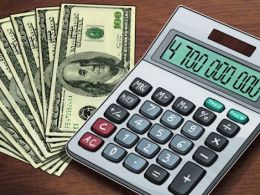
BoJ official says digital yen won’t be used to achieve negative interest rate
The Bank of Japan’s Executive Director announced that the eagerly-awaited digital yen won’t be used to attain negative interest rates. The Bank of Japan (BoJ) has said that its Central Bank Digital Currency (CBDC), the digital yen, will not be used to help attain negative interest rates. The BoJ’s Executive Director, Shinichi Uchida made the announcement in his most recent public speech. “While the idea of using such a functionality as a means to achieve a negative interest rate is sometimes discussed in academia, the Bank will not introduce CBDC on this ground.”Japan initially adopted....
Related News
Following the latest meeting of the monetary policy committee, the Central Bank of Nigeria says it has hiked the monetary policy rate to 15.5%. By increasing the key interest rate by 150 basis points, the central bank hopes to “narrow the negative real interest rate gap and rein in inflation.” The rate increase came just days after the naira’s parallel exchange rate against the dollar plunged to a new low. Narrowing the Negative Real Interest Rate Gap According to the Central Bank of Nigeria (CBN), members of the bank’s monetary policy committee (MPC) have....
European Central Bank. In a landmark monetary policy move, the European Central Bank (ECB) has announced negative interest rates. The ECB will charge an interest rate of -0.1% to banks wishing to store euros within central bank vaults. Domestically, the intention is to prod banks into lending money to businesses as opposed to buying government bonds. Internationally, the intention is to cause depreciation of the Euro relative to other currencies to increase the competitiveness of European exporters. It is unlikely that individual users in the 18 countries under the ECB's control will see....
With negative interest rates becoming a trend in most countries and inflation rates rising, bank services are not a viable and practical option for storing money. US-based consumers are faced with substantially high overdraft as well as monthly ATM and NSF fees. Millions of Americans pay over $4.7 bln annually, at $30 a month per account, to keep bank and checking accounts open. Most banks in the US charge users $50 to open an account, $30 to leave an account open and $35 in NSF fees. For an average American consumer to have an account open for an entire year, it would cost at least $410.....
Bitcoin traders have increased their bullish outlook on the cryptocurrency as the Bank of England reportedly considers moving into a negative interest rate
The FOMC meeting is currently looming above the financial markets, including bitcoin, given that it is just a few days away. Previous interest rate hike trends and the fact that inflation remains a prominent threat have led to a negative outlook for the FOMC meeting. It is expected that another Fed interest rate hike is on the horizon, which will no doubt have a profound effect on the crypto market. FOMC Meeting Draws Near The next FOMC meeting will take place on November 1-2 according to the official schedule. It happens around once every one to two months and is important as this is....




